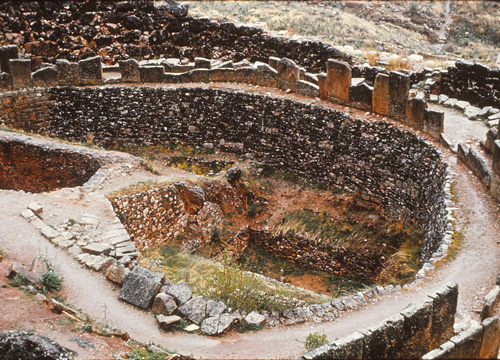Mycenae grave circle, c.1966
Photographer M.K. Steven, 35mm slide
James Logie Mermorial Collection archives
Archaeological sites are a little like layer cakes, though perhaps not ones you would want to eat. Sites are often made up of many layers of remains, one on top of the other, each one created by a different group of people. Each layer, or ‘strata’, might have a different soil colour or texture, and contain different objects relating to a specific period of time. Stratigraphy is the study of cultural remains in layers.


